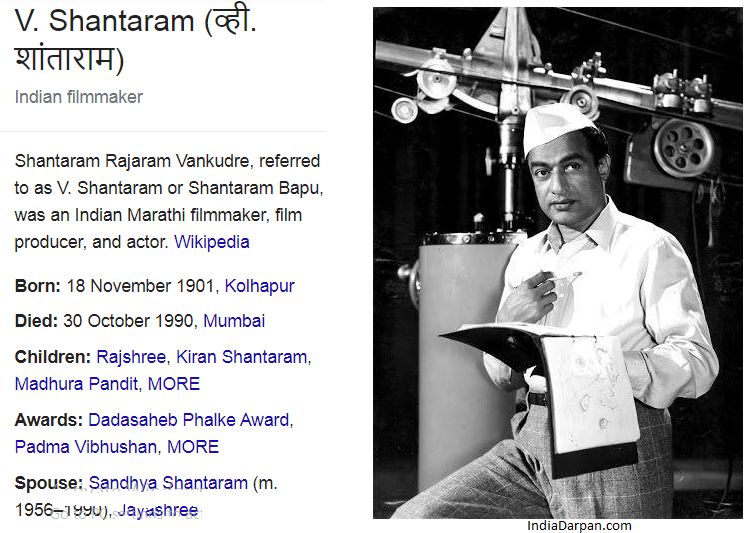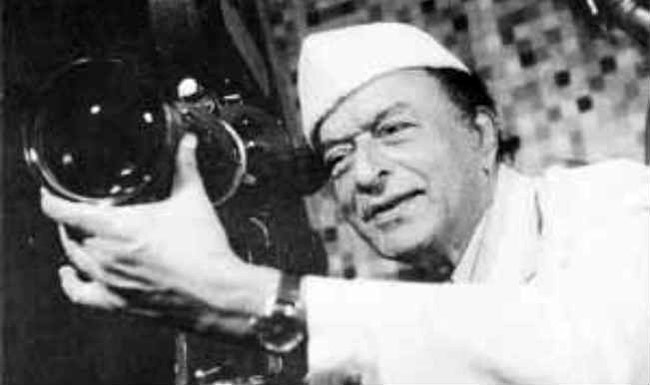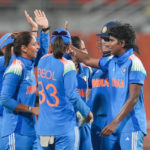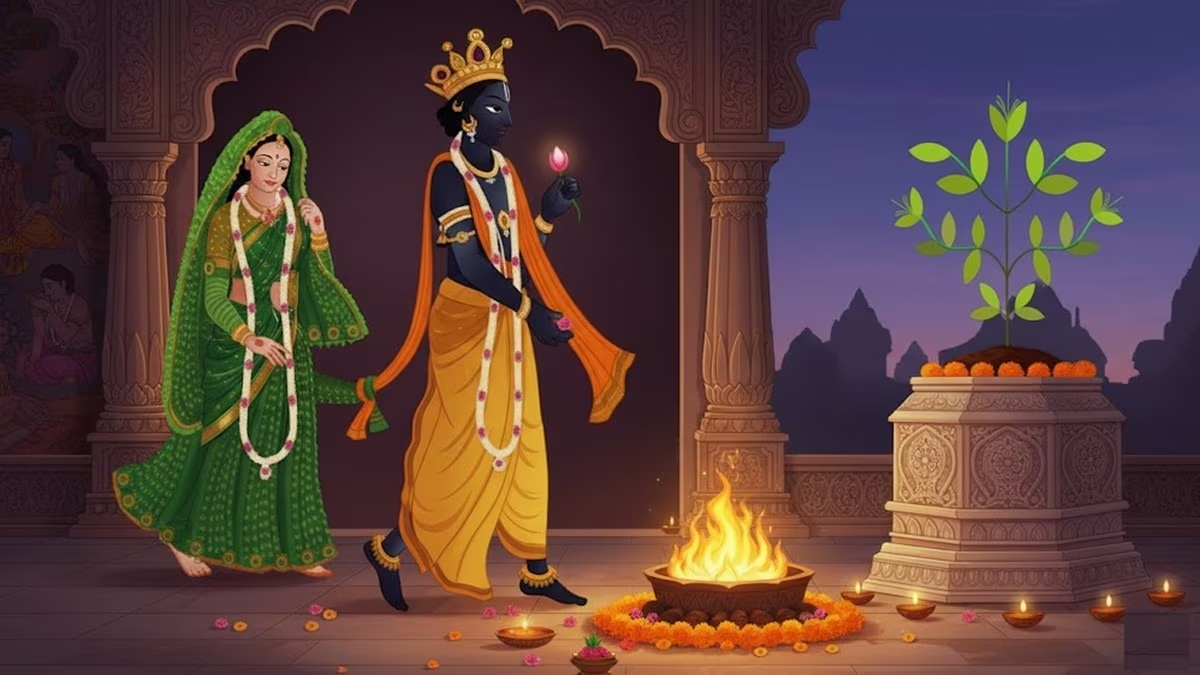- General
- Updated on April 4, 2025
The Untold Story of V. Shantaram: His Family, Career, and Unforgettable Legacy

Shantaram Rajaram Vankudre, widely known as V. Shantaram or Annasaheb, is a name synonymous with the foundation of Indian cinema. Known for his extraordinary contributions as a director, actor, and producer, he is often referred to as the pioneer of the Indian film industry. This post celebrates the life and legacy of a man who lived by his values, turned challenges into opportunities, and left behind an unforgettable impact on Bollywood and beyond.
Birth and Education
Born on 18th November 1901 in Kolhapur, British India, Shantaram came from a Marathi family with a Jain Kasar father and a Hindu mother. His childhood was relatively comfortable, despite financial constraints. His early education was marked by a lack of interest in academics. However, he excelled in extracurricular activities, especially mimicking, which earned him the reputation of a talented performer. Shantaram developed a deep love for music but realized, after attending a theatre show, that singing wasn’t his forte, leading to disappointment.
At the age of 20, Shantaram married Vimalabai, who was only 12 years old at the time. Their marriage marked the beginning of his personal journey intertwined with the world of cinema.
Shantaram’s Family and Marriages

Shantaram’s family life was one of complexities and love. He married three women throughout his life and had a large family. His first wife, Vemla, was a significant part of his life. Although their marriage started in 1921, when Vemla was only 12, they lived together harmoniously for over 20 years. They had four children, including their son Prabhat Kumar and three daughters Saroj, Madhura, and Charusheela.
In 1941, Shantaram married Jayshree, an actress he had worked with for several years. While this marriage caused tension with his first wife, they managed to coexist as a family for a while. Jayshree bore three children, including Kiran Shantaram, who went on to become a notable film director. Shantaram’s third wife was Sandhya, an actress with whom he had no children. She became the one who took care of him in his final years.
A Legendary Career in Cinema
Shantaram’s career in cinema began when he worked as an errand boy for the Maharashtra Film Co. in Kolhapur. His first acting role came in 1921 in the silent film Surekha Haran, where he portrayed the role of Lord Krishna. After acting in several films, Shantaram made his directorial debut in 1927 with Nana Palkar, a Marathi historical film.
Shantaram’s directing prowess was unmatched, and he went on to found his production house, Prabhat Film Co., which produced some iconic films. His works, including Manoos (1939), Padosi (1941), and Ayodhya Cha Raja (1932), brought social change and advocated for humanism while tackling injustice and bigotry.
In 1932, Shantaram made Ayodhya Cha Raja, which became the first Marathi-language film ever. Later, he moved to Mumbai and founded Rajkamal Kalamandir, a film production house that became one of the most sophisticated studios in India.
Throughout his career, Shantaram not only directed and produced but also acted in several iconic films like Do Ankhen Barah Haath (1957), Navrang (1959), and Jhanak Jhanak Payal Baaje (1955), which went on to become milestones in Indian cinema.
Iconic Films by Shantaram
Shantaram’s directorial and production skills brought forth some of the most memorable films in Bollywood history:
- Manoos (1939)
- Padosi (1941)
- Do Ankhen Barah Haath (1957)
- Jhanak Jhanak Payal Baaje (1955)
- Navrang (1959)
- Pinjra (1973)
- Stree (1961)
His film Do Ankhen Barah Haath (1957) is considered one of his best works, and it earned him multiple awards, including Filmfare Best Director. His film Jhanak Jhanak Payal Baaje (1955) was even praised internationally and won prestigious awards at the Berlin International Film Festival.
V. Shantaram also contributed significantly to the Marathi film industry, with films like Ayodhya Cha Raja (1932), Maya Machindra (1932), and Rani Saheba (1930). His innovative techniques and social-conscious storytelling made him one of the most influential figures in Indian cinema.
Awards and Recognition
V. Shantaram’s contributions were not only appreciated within the Indian film industry but were also acknowledged on the global stage. In 1955, he won the All India Certificate of Merit for Best Feature Film for Jhanak Jhanak Payal Baaje. His work on Do Ankhen Barah Haath (1957) earned him the President’s Gold Medal and Filmfare Award for Best Director.
In 1958, Shantaram received recognition at the International Film Festival in Berlin for his film Do Ankhen Barah Haath, where he won the OCIC Award and the Silver Bear Special Prize.
In 1985, Shantaram was honored with the prestigious Dadasaheb Phalke Award, acknowledging his lifelong contribution to Indian cinema. Posthumously, he was awarded the Padma Bhushan in 1992 for his exceptional contributions to Indian cinema.
The V. Shantaram Award was instituted in his honor, and the V. Shantaram Motion Picture Scientific Research and Cultural Foundation was established in 1993 to promote film-making.
Shantaram’s Final Days and Legacy
In his final years, V. Shantaram continued to remain active in the industry, directing, producing, and mentoring younger talents. He was 88 years old when his health began to decline after a fall in 1990. He passed away on October 30, 1990.
During his last days, Shantaram was cared for by Sandhya, his third wife, who displayed unwavering devotion. Despite his deteriorating health, Shantaram’s legacy lived on in his films, which continue to inspire filmmakers and audiences alike.
After his death, Vemla passed away in 1996, and the entire Shantaram family continued to honor his memory, upholding his contributions to Indian cinema. His autobiography, published in both Hindi and Marathi, is a testament to his enduring legacy.
Read Also : Jagdeep Dhankhar: A Journey from Lawyer to Vice President of India
Conclusion
Shantaram Rajaram Vankudre, or V. Shantaram, is remembered as a true legend of Indian cinema. From his early struggles to becoming a powerhouse in the film industry, he redefined what it meant to be a director, producer, and actor. His dedication to social change, his innovation in filmmaking, and his unmatched talent made him a pioneer in the Indian film industry.
Even after his death, his influence remains significant, and his films continue to inspire the generations that follow. Shantaram’s name will forever be etched in the history of Indian cinema as a true icon whose legacy transcends time and generations.
Join the discussion
Related Articles
No results available
ResetTrending Articles


- General
- Updated on November 14, 2025


- Tech
- Updated on November 12, 2025


- General
- Updated on November 8, 2025


- General
- Updated on November 6, 2025


- Sports
- Updated on November 5, 2025


- General
- Updated on November 4, 2025


- General
- Updated on November 1, 2025

- General
- Updated on October 30, 2025


- General
- Updated on October 30, 2025


- General
- Updated on October 27, 2025
No results available
Reset


